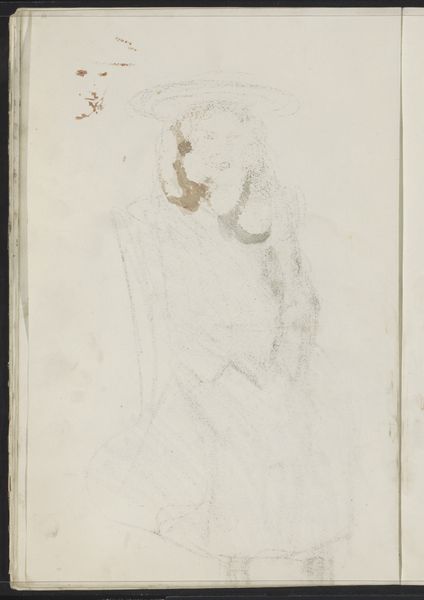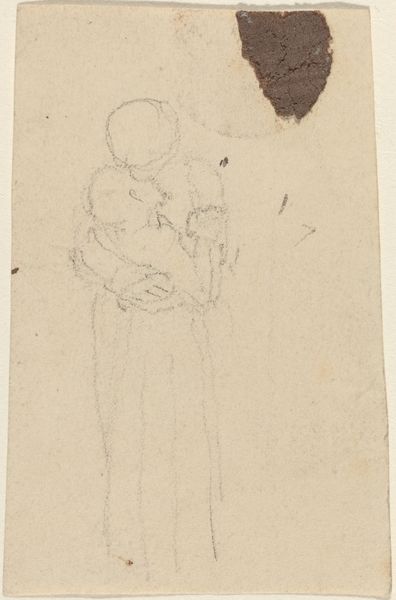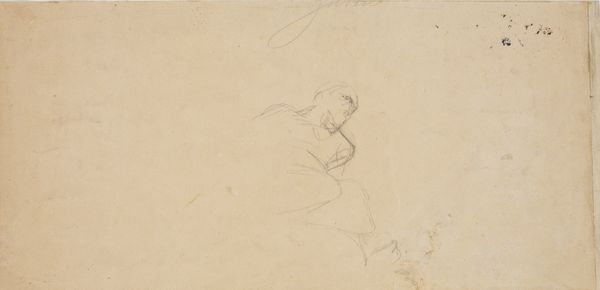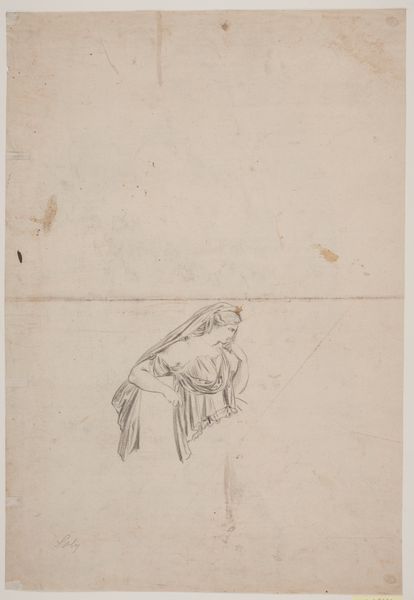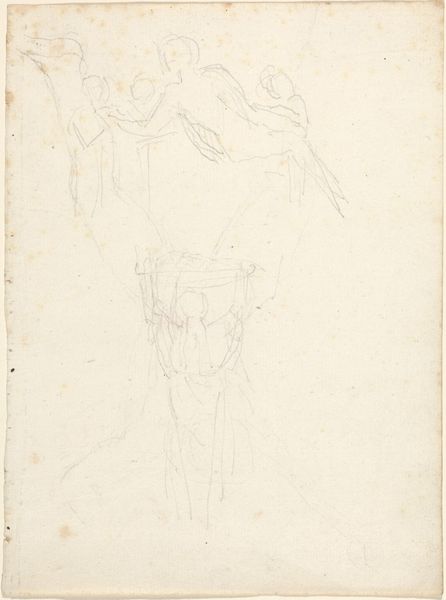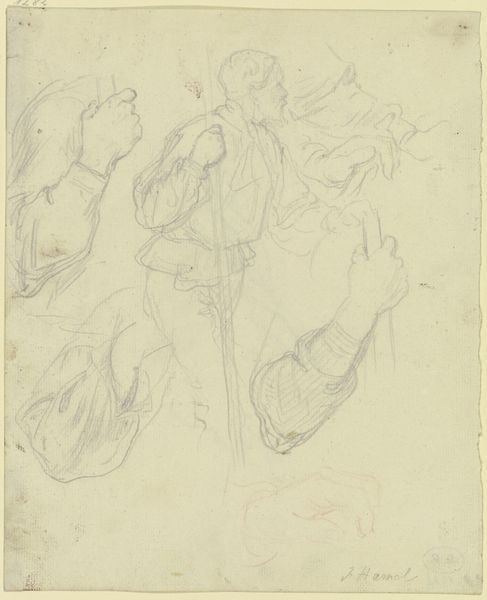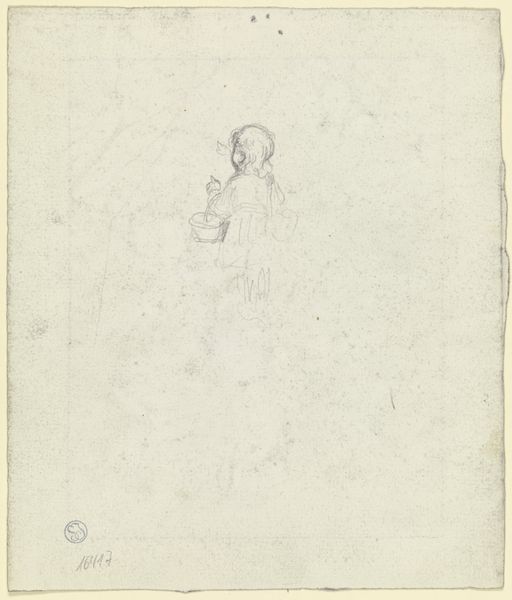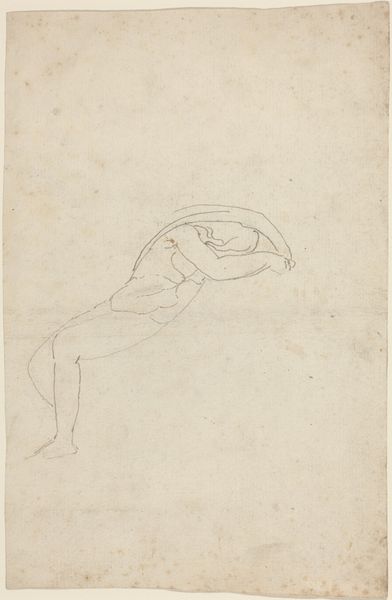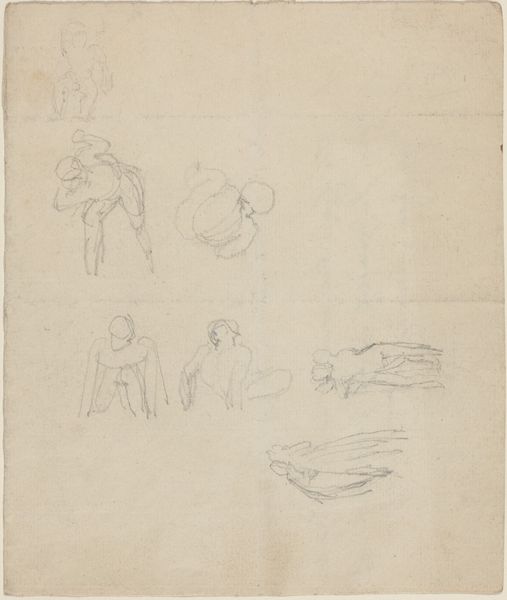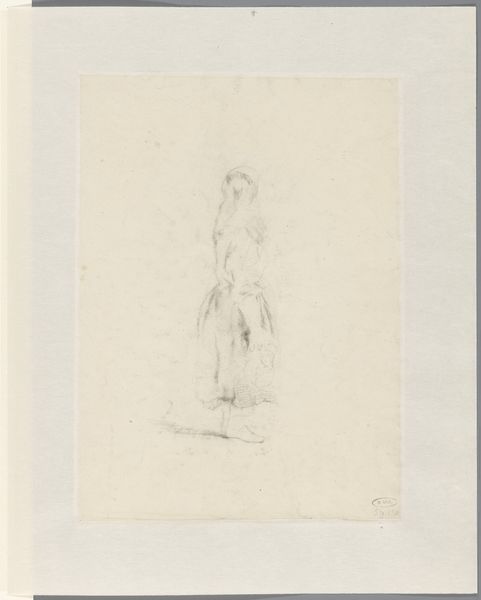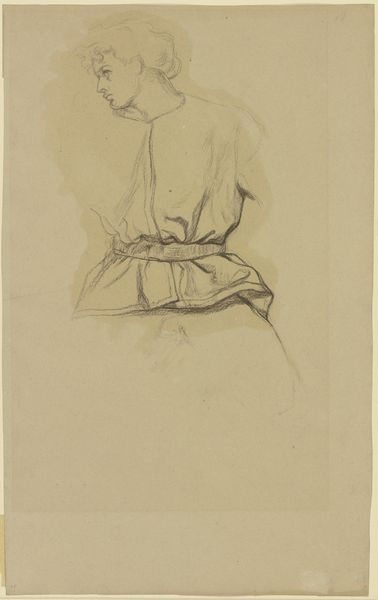
Studienblatt_ Das Kind der flehenden Helfensteinerin im _Bauernkrieg_ 1876
0:00
0:00
Copyright: Public Domain
Curator: This drawing by Julius Hamel, titled "Studienblatt_ Das Kind der flehenden Helfensteinerin im _Bauernkrieg_", was completed in 1876. It’s currently held here at the Städel Museum, rendered in pencil on toned paper. Editor: There's a palpable vulnerability in this sketch. The light pencil work almost obscures the figures, suggesting fragility and a plea for protection. What strikes me most is the unfinished nature—it feels like a moment captured in its rawest emotional state. Curator: It's interesting you say that. This work really encapsulates the intersection of the personal and the political within the context of German Expressionism. You see Hamel engaging with themes of the peasant wars through the intimate lens of a mother and child. The historical events are looming. Editor: Absolutely, and it isn't just about historical accuracy; it is the symbolic weight of the mother-child relationship in times of upheaval. The act of a mother pleading resonates universally, but the Helfensteiner connection adds a specific cultural and emotional dimension. Does this tie into traditional symbols of motherhood? Curator: In a way, it subverts them. The traditional Madonna and Child imagery is usually imbued with a sense of idealized serenity. Here, the sketchy, almost frantic lines, combined with the historical reference, evoke a sense of desperation and social anxiety. The incompleteness points to the open-ended and unresolved issues plaguing 19th-century German society. Editor: The sketchy quality is interesting. It doesn't lend itself to traditional interpretations, more so the sense of uncertainty. This piece reflects the anxieties of the time. How the iconography is interrupted, rather than neatly packaged for passive consumption, challenges any romantic idealization of the peasantry. It's a disrupted Madonna, if you will. Curator: Yes, disrupted in ways that speaks to larger political themes. It moves beyond being simply representational. The artist uses a popular symbolic trope to subtly speak to a larger historical issue, perhaps a sense of unease. Editor: Looking at it now, it leaves me with a sense of the universality of the desperation in those periods of social distress, regardless of what era it took place. Curator: And for me, a consideration for the role artists play in addressing power structures in a symbolic, rather than a direct way, that can add layers to what it seems.
Comments
No comments
Be the first to comment and join the conversation on the ultimate creative platform.
